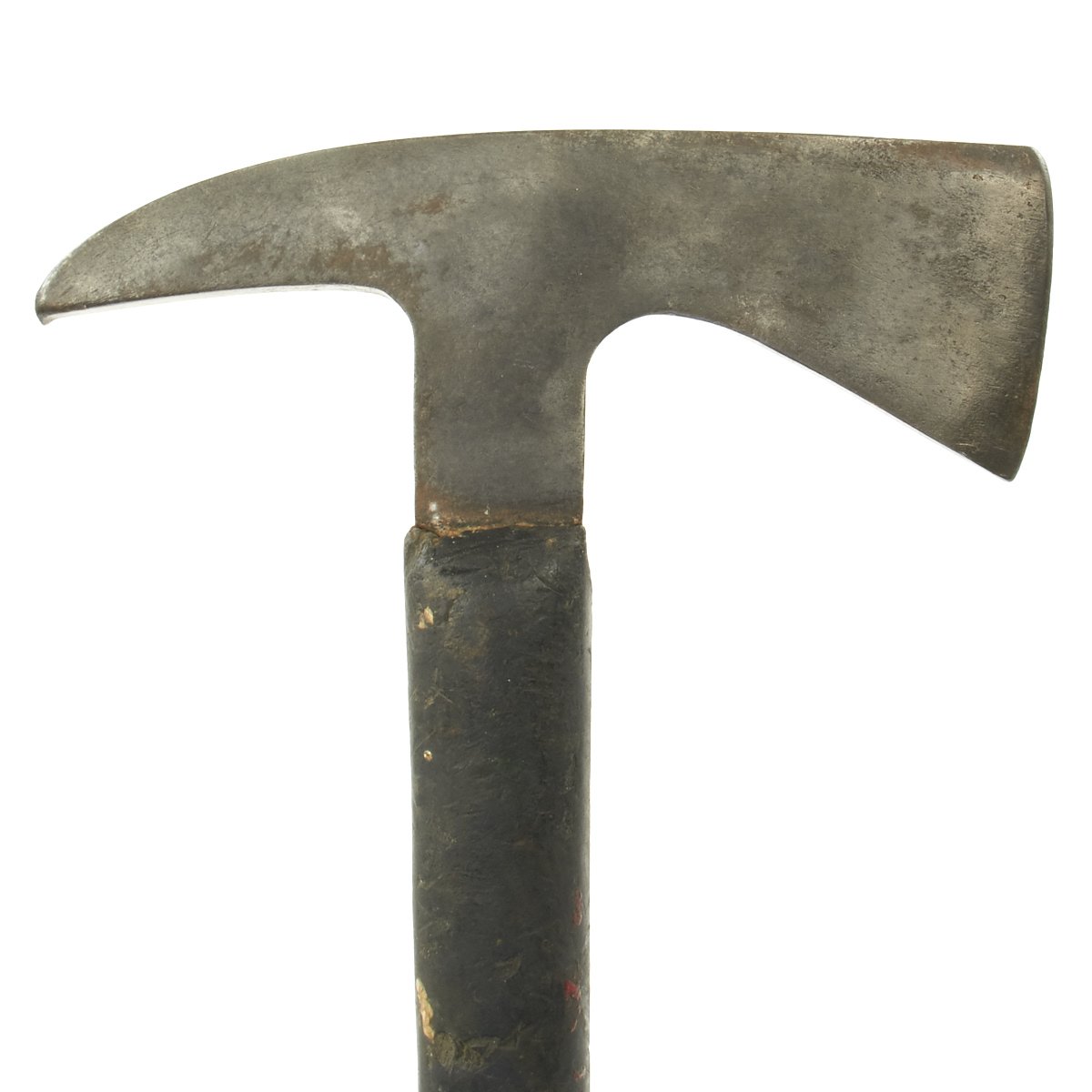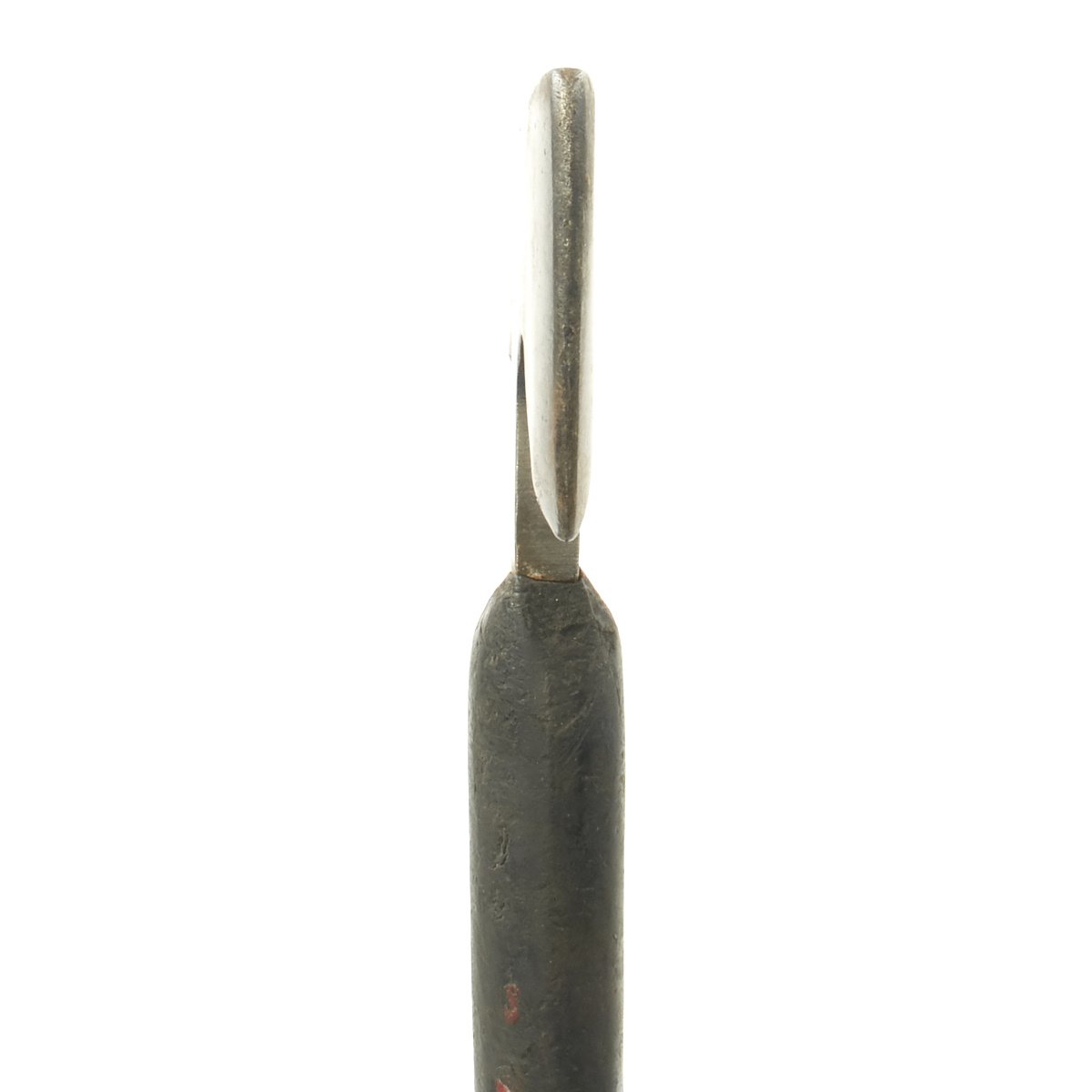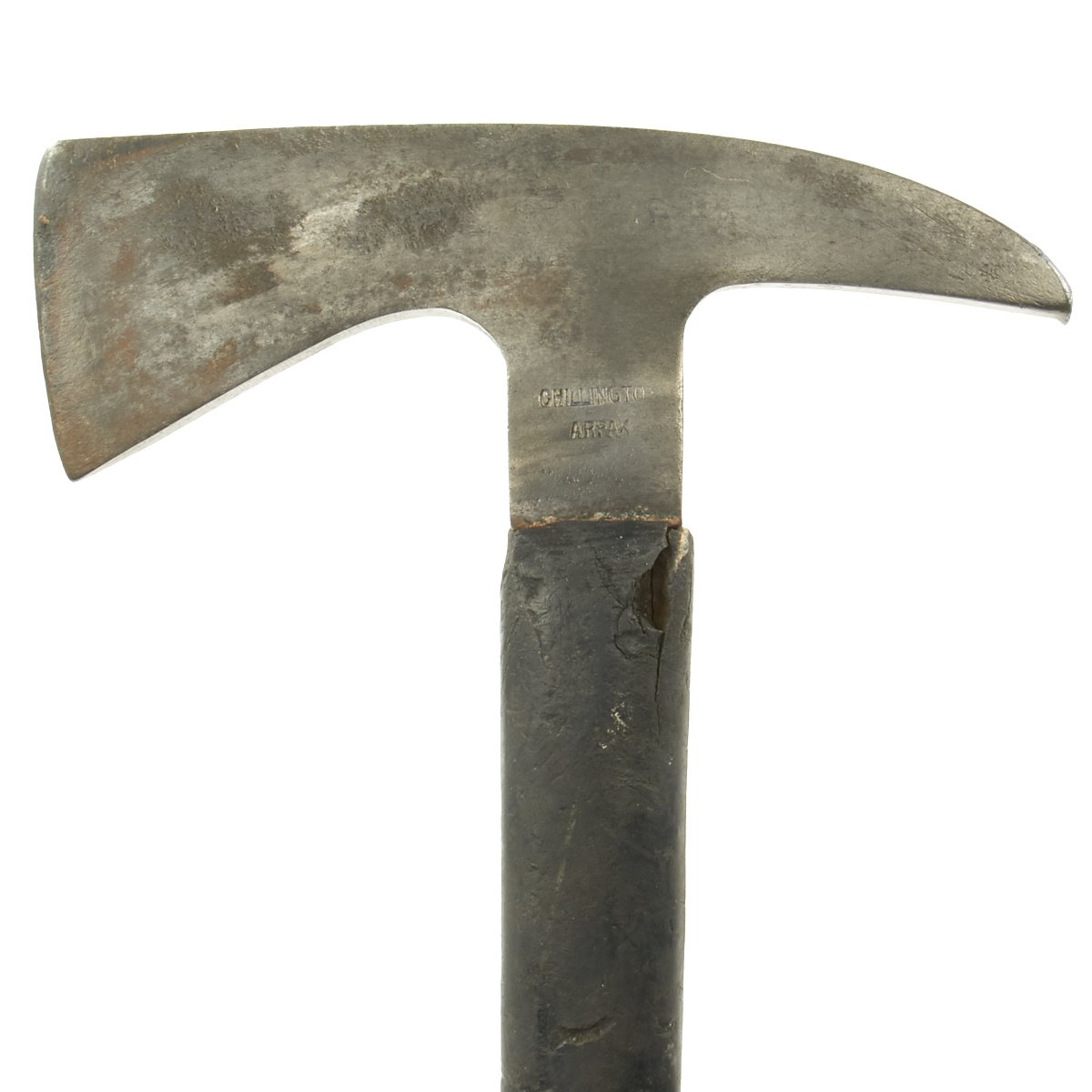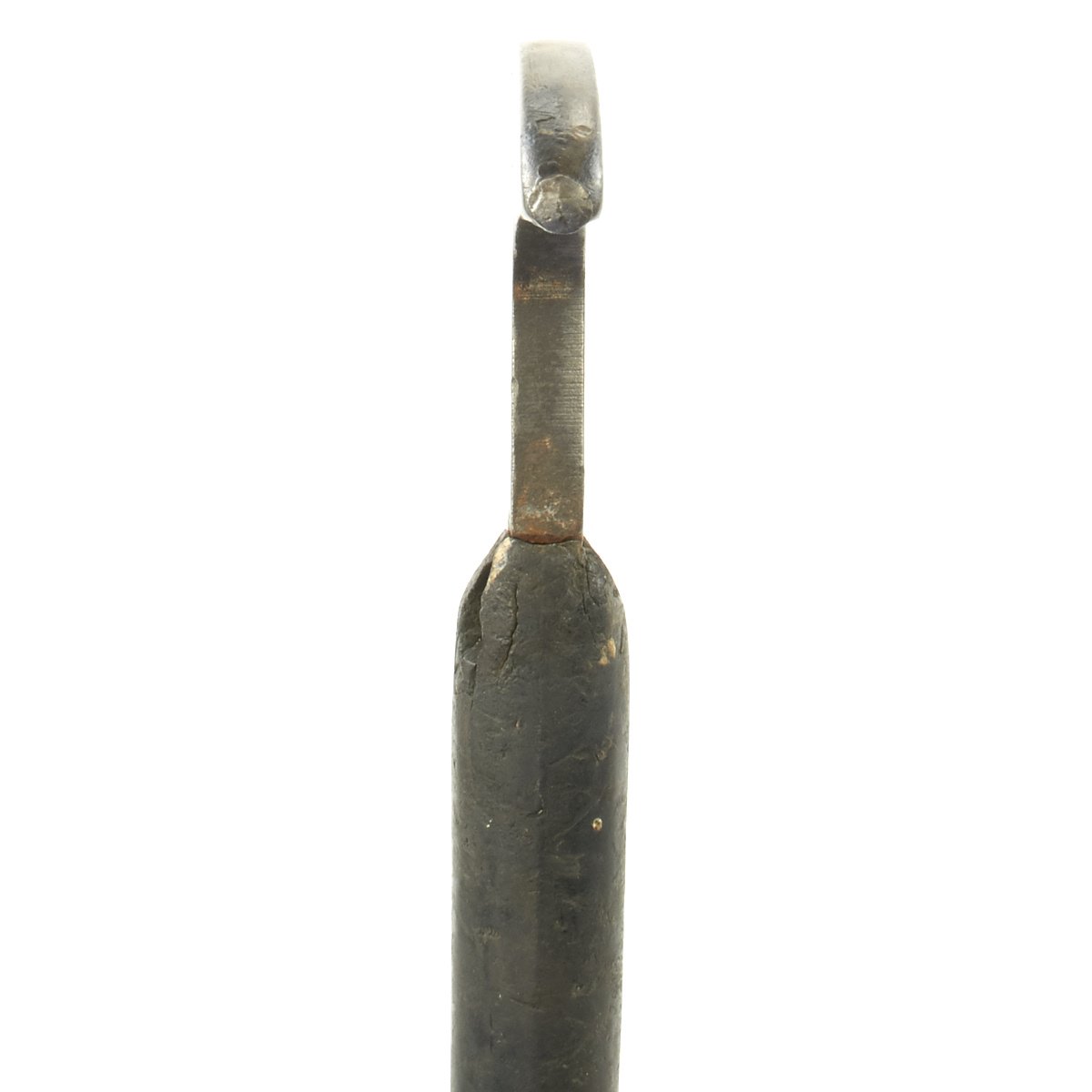Original British WWII Air Raid Precautions ARPAX Fire Rescue Axe by Chillington Tool Co. Original Items
$ 175,00 $ 70,00
Original Item: Only One Available. The ‘ARPAX’ was manufactured by the Chillington Tool Company Limited of Wolverhampton and is notable for its rubber handle, subject to a patent applied for in June 1938 and finally granted in December 1939. Being encased in a tough rubber, the handle was claimed to be less liable to catch fire or break than the traditional wooden types, and would also protect the user from potentially fatal shocks if he or she happened to accidentally cut through electric cables. To this end, molded into the handle of this example is the comforting phrase TESTED 20.000 VOLTS. On the other side of the handle are details of the patent; earlier manufactures, such as this example, (presumably prior to December 1939 when the full patent was granted) bear the legend PRO PAT 19242 – 38, while later ones bear ‘PATENT No. 515767’.
This example is also marked on the exposed shaft:
CHILLINGTON
ARPAX
Covered overall in slight salt and pepper pitting, this is the real thing: a fire rescue axe used by the “first responders” during London’s BLITZ Air Raids in the early 1940’s. It has a heavy hard Rubber permanently attached handle cover with large curved blade axe head with spike protruding rearward. Measures 15 inches long, with a 7 inch long head. This style of axe was also used by both British and American bomber crews during WWII and after. The pre-patent marking indicates it was made circa 1939-40.
In fine operational condition and ready to display.
More about the A.R.P.:
Air Raid Precautions (ARP) was an organization in the United Kingdom set up in 1937 dedicated to the protection of civilians from the danger of air raids. It included the Raid Wardens’ Service that was to report on bombing incidents. Every local council was responsible for organizing ARP wardens, messengers, ambulance drivers, rescue parties and liaison with police and fire brigades.
September 1st, 1939, ARP Wardens enforced the “blackout”. Heavy curtains and shutters were required on all private residences, commercial premises, and factories to prevent light escaping and so making them a possible target for enemy bombers to locate their targets. With increased enemy bombing during the Blitz, the ARP services were central in reporting and dealing with bombing incidents. They managed the air raid sirens and ensured people were directed to shelters.
From 1941 the ARP officially changed its title to Civil Defense Service to reflect the wider range of roles it then encompassed. During the war almost 7,000 Civil Defense workers were killed. In all some 1.4 million men and women served as ARP wardens during World War Two. The Civil Defense Service was stood down after the end of the war in Europe on 2 May 1945.
The ARP Services were to include several specialist branches. First Aid Parties were trained to give first response first aid to those injured in bombing incidents.
Fast Shipping with Professional Packaging
Thanks to our longstanding association with UPS FedEx DHL, and other major international carriers, we are able to provide a range of shipping options. Our warehouse staff is expertly trained and will wrap your products according to our exact and precise specifications. Prior to shipping, your goods will be thoroughly examined and securely secured. We ship to thousands clients each day across multiple countries. This shows how we're dedicated to be the largest retailer on the internet. Warehouses and distribution centres can be located throughout Europe as well as the USA.
Note: Orders with more than one item will be assigned a processing date depending on the item.
Before shipping before shipping, we'll conduct a thorough inspection of the items you have ordered. Today, the majority of orders will be delivered within 48 hours. The delivery time will be between 3-7 days.
Returns
The stock is dynamic and we cannot completely manage it because multiple stakeholders are involved, including our factory and warehouse. So the actual stock may alter at any time. It's possible that you may not receive your order once the order has been made.
Our policy is valid for a period of 30 days. If you don't receive the product within 30 days, we are not able to issue a refund or an exchange.
You can only return an item if it is unused and in the same state as the day you received it. You must have the item in its original packaging.
Related products
Uncategorized
Uncategorized
Uncategorized
Uncategorized
Uncategorized
Uncategorized
Uncategorized
Uncategorized
Armored Burgonet Helmet & Polearm from Scottish Castle Leith Hall Circa 1700 Original Items
Uncategorized
Armoured Fighting Vehicles of the World: AFVs of World War One (Hardcover Book) New Made Items
Uncategorized
Uncategorized
Uncategorized
Uncategorized
Band of Brothers ORIGINAL GERMAN WWII Le. F.H. 18 10.5cm ARTILLERY PIECE Original Items
Uncategorized
Uncategorized
Uncategorized
Uncategorized
Uncategorized
Uncategorized
Uncategorized












































































